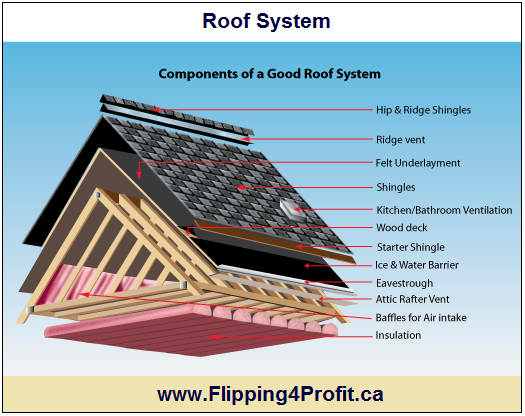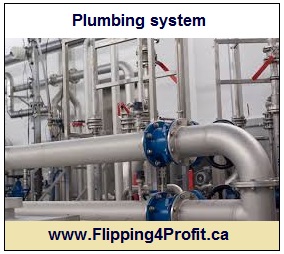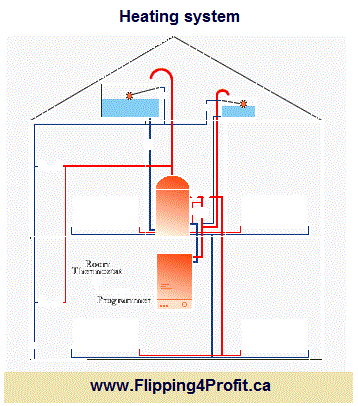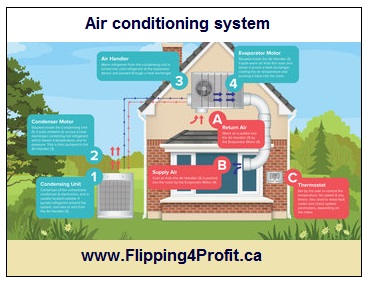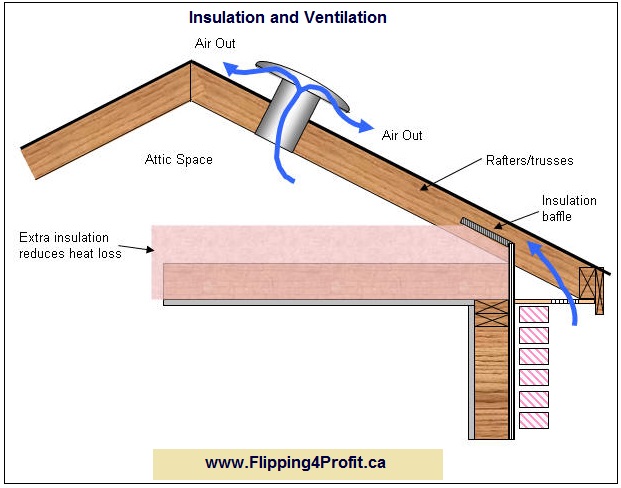- Nav Sing
- Mar 2, 2016
- Strategies
The Importance of Home Inspection
The Importance of Home Inspection:
As many of you know we have been in a Sellers’ market for a couple of years now. In multiple offer situations some buyers elect to purchase a home without getting a home inspection. Or they rely on some abridged version provided by the Sellers. Often there is sufficient time for the buyer to do their own inspection in advance of the offer date. It may be a shame to do an inspection on a property that you will not own, but that is better than buying a place without knowing for sure that there aren’t any major deficiencies.
You cannot rely solely on how nice a place appears to have been renovated. It’s the stuff that you don’t see that should be a concern.
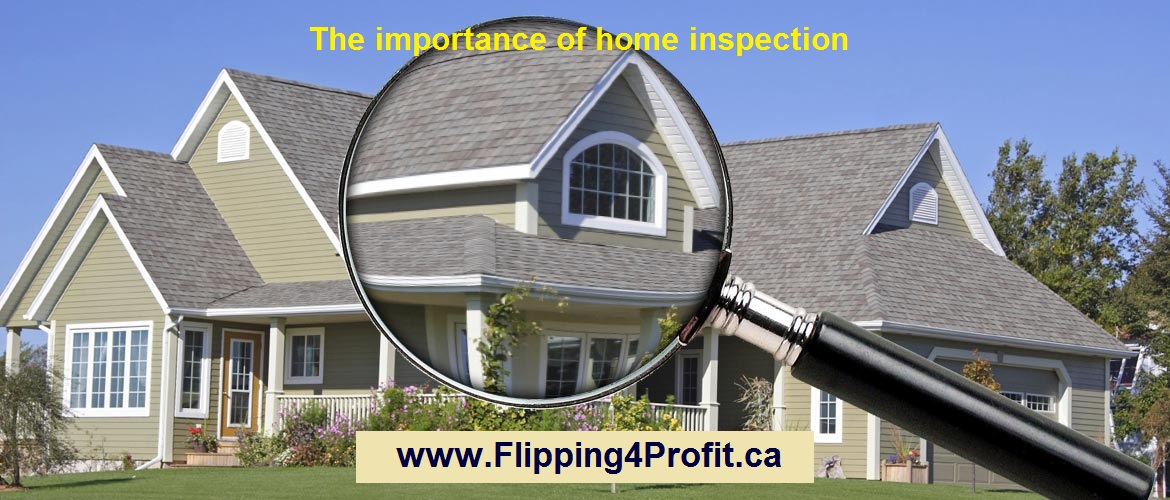 Most of the time the home sellers are hoping for multiple offers so that an inspector wouldn’t walk through the place and find the hidden deficiencies.
Most of the time the home sellers are hoping for multiple offers so that an inspector wouldn’t walk through the place and find the hidden deficiencies.
Remember that all due diligence is on the buyer’s shoulders. Don’t trust home sellers or their agents. The home seller isn’t warranting anything when you buy a property so please be careful and get your property inspected so you know precisely what you are dealing with.
Home Inspection Basics in Ontario
What is Included?
1.1 The Ontario Association of Home Inspectors (OAHI) is a not-for-profit professional society established in 1987. Membership in OAHI is voluntary and its members include private, fee-paid home inspectors. OAHI's objectives include promotion of excellence within the profession and continual improvement of its members' inspection services to the public.
2. Purpose And Scope
2.1 The purpose of these Standards of Practice is to establish a minimum and uniform standard for private, fee-paid home inspectors who are members of the Ontario Association of Home Inspectors. Home Inspections performed to these Standards of Practice are intended to provide the client with information regarding the condition of the systems and components of the home as inspected at the time of the Home Inspection.
2.2 Inspectors shall:
A. inspect:
1. readily accessible systems and components of homes listed in these Standards of Practice.
2. installed systems and components of homes listed in these Standards of Practice.
B. report :
1. on those systems and components inspected which, in the professional opinion of the
inspector, are significantly deficient or are near the end of their service lives.
2. a reason why, if not self-evident, the system or component is significantly deficient or near the
end of its service life.
3. the inspector's recommendations to correct or monitor the reported deficiency.
4. on any systems and components designated for inspection in these Standards of Practice which
were present at the time of the Home
Inspection but were not inspected and a reason they were not inspected.
2.3 These Standards of Practice are not intended to limit inspectors from:
A. including other inspection services, systems or components in addition to those required by
these Standards of Practice.
B. specifying repairs, provided the inspector is appropriately qualified and willing to do so.
C. excluding systems and components from the inspection if requested by the client.
3.1 The inspector shall
A. inspect
1. the structural components including foundation and framing.
2. by probing a representative number of structural components where deterioration is suspected
or where clear indications of possible deterioration exist. Probing is NOT required when probing
would damage any finished surface or where no deterioration is visible.
B. describe
1. the foundation and report the methods used to inspect the under-floor crawl space
2. the floor structure
3. the wall structure
4, the ceiling structure
5. the roof structure and report the methods used to inspect the attic.
3.2 The inspector is NOT required to
A. provide any engineering service or architectural service
B. offer an opinion as to the adequacy of any structural system or component
4.1 The inspector shall:
A. inspect :
1. the exterior wall covering, flashing and trim.
2. all exterior doors.
3. attached decks, balconies, stoops, steps, porches, and their associated railings.
4. the eaves, soffits, and fascias where accessible from the ground level.
5. the vegetation, grading, surface drainage, and retaining walls on the property when any of hese
are likely to adversely affect the building.
6. walkways, patios, and driveways leading to dwelling entrances.
describe the exterior wall covering.
4.2 The inspector is NOT required to:
A. inspect :
1. screening, shutters, awnings, and similar seasonal accessories.
fences.
2. geological, geotechnical or hydrological conditions.
3. recreational facilities.
4. outbuildings.
5. seawalls, break-walls, and docks.
6. erosion control and earth stabilization measures.
5.1 The inspector shall:
A. inspect :
1. the roof covering.
2. the roof drainage systems.
3. the flashings.
4. the skylights, chimneys, and roof penetrations.
5. describe the roof covering and report the methods used to inspect the roof.
5.2 The inspector is NOT required to:
A. inspect :
1. antennae.
2. interiors of flues or chimneys which are not readily accessible.
3. other installed accessories.
6.1 The inspector shall:
A. inspect :
1. the interior water supply and distribution systems including all fixtures and faucets.
2. the drain, waste and vent systems including all fixtures.
3. the water heating equipment.
4. the vent systems, flues, and chimneys.
5. the fuel storage and fuel distribution systems.
6. the drainage sumps, sump pumps, and related piping.
B. describe:
1. the water supply, drain, waste, and vent piping materials.
2. the water heating equipment including the energy source.
3. the location of main water and main fuel shut-off valves.
6.2 The inspector is NOT required to:
A. inspect :
1. the clothes washing machine connections.
2. the interiors of flues or chimneys which are not readily accessible.
3. wells, well pumps, or water storage related equipment.
4. water conditioning systems.
5. solar water heating systems.
6. fire and lawn sprinklersystems.
7. private waste disposal systems.
B. determine:
1. whether water supply and waste disposal systems are public or private.
2. the quantity or quality of the water supply.
C. operate safety valves or shut-off valves.
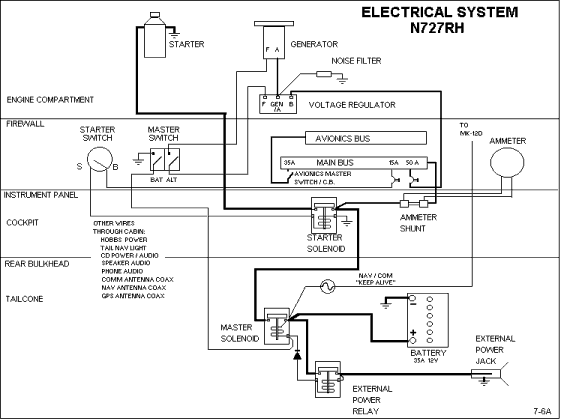 7. Electrical System
7. Electrical System
7.1 The inspector shall:
A. inspect :
1. the service drop.
2. the service entrance conductors, cables, and raceways.
3. the service equipment and main disconnects.
4. the service grounding.
5. the interior components of service panels and sub panels.
6. the conductors.
7. the overcurrent protection devices.
8. a representative number of installed lighting fixtures, switches, and receptacles.
9. the ground fault circuit interrupters.
B. describe:
1. the amperage and voltage rating of the service.
2. the location of main disconnect(s) and sub panels.
3. the wiring methods.
C. report:
1. on the presence of solid conductor aluminum branch circuit wiring.
2. on the absence of smoke detectors.
7.2 The inspector is NOT required to:
A. inspect :
1. the remote control devices unless the device is the only control device.
2. the alarm systems and components.
3. the low voltage wiring, systems and components.
4. the ancillary wiring, systems and components not a part of the primary electrical power
distribution system.
5. measure amperage, voltage, or impedance
8.1 The inspector shall:
A. inspect :
1. the installed heating equipment.
2. the vent systems, flues, and chimneys.
B. describe:
1. the energy source.
2. the heating method by its distinguishing characteristics.
8.2 The inspector is NOT required to:
A. inspect :
1. the interiors of flues or chimneys which are not readily accessible.
2. the heat exchanger.
3. the humidifier or dehumidifier.
4. the electronic air filter.
5. the solar space heating system.
6. determine heat supply adequacy or distribution balance.
9.1 The inspector shall:
A. inspect the installed central and through-wall cooling equipment.
B. describe:
1. the energy source
2. the cooling method by its distinguishing characteristics.
9.2 The inspector is NOT required to:
A. inspect electronic air filters.
B. determine cooling supply adequacy or distribution balance.
10.1 The inspector shall:
A. inspect:
1. the walls, ceilings, and floors.
2. the steps, stairways, and railings.
3. the countertops and a representative number of installed cabinets.
4. a representative number of doors and windows.
5. garage doors and garage door operators.
10.2 The inspector is NOT required to:
A. inspect:
1. the paint, wallpaper, and other finish treatments.
2. the carpeting.
3. the window treatments.
4. the central vacuum systems.
5. the household appliances.
6. recreational facilities.
11.1 The inspector shall:
A. inspect:
1. the insulation and vapor retarders in unfinished spaces.
2. the ventilation of attics and foundation areas.
3. the mechanical ventilation systems.
B. describe:
1. the insulation and vapor retarders in unfinished spaces.
2. the absence of insulation in unfinished spaces at conditioned surfaces.
11.2 The inspector is NOT required to:
A. disturb insulation or vapor retarders.
B. determine indoor air quality.
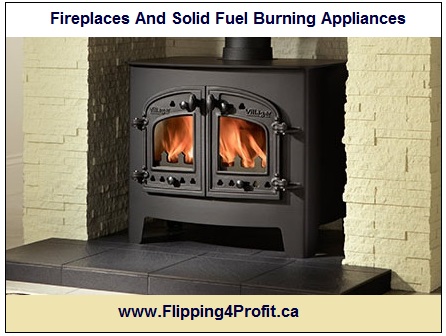 12. Fireplaces And Solid Fuel Burning Appliances
12. Fireplaces And Solid Fuel Burning Appliances
12.1 The inspector shall:
A. inspect:
1. the system components.
2. the vent systems, flues, and chimneys.
B. describe:
1. the fireplaces and solid fuel burning appliances.
2. the chimneys.
12.2 The Inspector is NOT required to:
A. inspect:
1. the interiors of flues or chimneys.
2. the firescreens and doors.
3. the seals and gaskets.
4. the automatic fuel feed devices.
5. the mantles and fireplace surrounds.
6. the combustion make-up air devices.
7. the heat distribution assists whether gravity controlled or fan assisted.
B. ignite or extinguish fires.
C. determine draft characteristics.
D. move fireplace inserts or stoves or firebox contents.
13. General Limitations And Exclusions
13.1 General limitations:
A. Inspections performed in accordance with these Standards of Practice:
1. are not technically exhaustive.
2. will not identify concealed conditions or latent defects.
B. These Standards of Practice are applicable to buildings with four or fewer dwelling units and
their garages or carports.
13.2 General exclusions:
A. The inspector is not required to perform any action or make any determination unless
specifically stated in these Standards of Practice,
except as may be required by lawful authority.
B. Inspectors are NOT required to determine:
1. the condition of systems or components which are not readily accessible.
2. the remaining life of any system or component.
3. the strength, adequacy, effectiveness, or efficiency of any system or component.
4. the causes of any condition or deficiency.
5. the methods, materials, or costs of corrections.
6. future conditions including, but not limited to, failure of systems and components.
7. the suitability of the property for any specialized use.
compliance with regulatory requirements (codes, regulations, laws, ordinances, etc.).
8. the market value of the property or its marketability.
9. the advisability of the purchase of the property.
10. the presence of potentially hazardous plants or animals including, but not limited to wood
destroying organisms or diseases harmful to humans.
11. the presence of any environmental hazards including, but not limited to toxins, carcinogens,
noise, and contaminants in soil, water, and air.
12. the effectiveness of any system installed or methods utilized to control or remove suspected
hazardous substances.
13. the operating costs of systems or components.
14. the acoustical properties of any system or component.
C. Inspectors are NOT required to offer:
1. or perform any act or service contrary to law.
2. or perform engineering services.
3. or perform work in any trade or any professional service other than home inspection.
4. warranties or guarantees of any kind.
D. Inspectors are NOT required to operate:
1. any system or component which is shut down or otherwise inoperable.
2. any system or component which does not respond to normal operating controls.
3. shut-off valves.
E. Inspectors are NOT required to enter:
1. any area which will, in the opinion of the inspector, likely be dangerous to the inspector or
other persons or damage the property or
2. its systems or components.
3. the under-floor crawl spaces or attics which are not readily accessible.
F. Inspectors are NOT required to inspect:
1. underground items including, but not limited to underground storage tanks or other underground indications of their presence, whether abandoned or active.
2. systems or components which are not installed.
3. decorative items.
4. systems or components located in areas that are not entered in accordance with these Standards of Practice.
5. detached structures other than garages and carports.
6.common elements or common areas in multi-unit housing, such as condominium properties or
cooperative housing.
G. Inspectors are NOT required to:
1. perform any procedure or operation which will, in the opinion of the inspector, likely be dangerous to the inspector or other persons or
damage the property or it's systems or components.
2. move suspended ceiling tiles, personal property, furniture, equipment, plants, soil, snow, ice, or debris.
3. dismantle any system or component, except as explicitly required by these Standards of Practice.
We can HELP !! We also BUY HOUSES. Please call:
P.S. Success isn't a matter of chance, it's a matter of choice. So it's up to you to make the right choice to become successful. If you don't know what to do it starts with making the choice to register for this LIVE real estate investors training in your town now and making sure you make the right choice to SHOW UP!!! Learn more to earn more!
Are you a Canadian real estate Investor? Join Canada's largest real estate investors club now.



